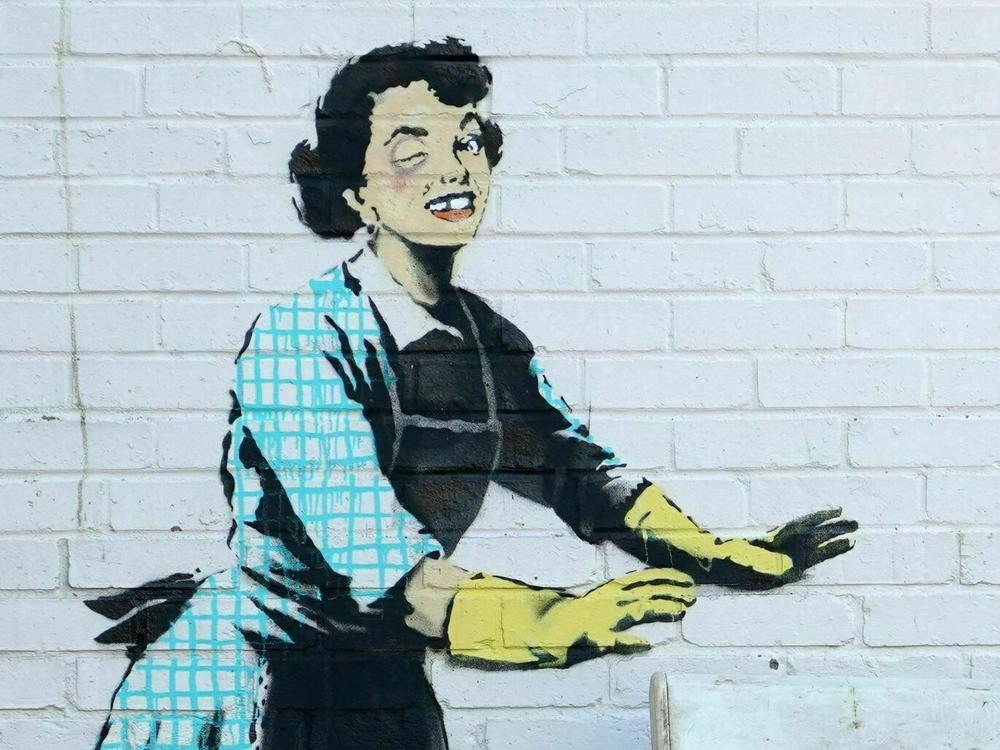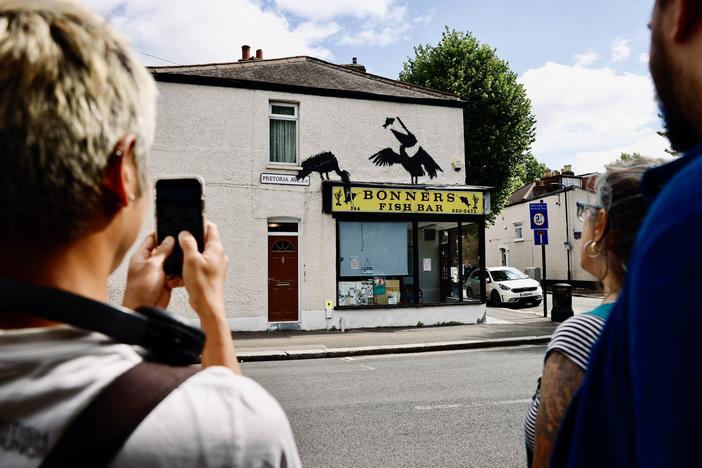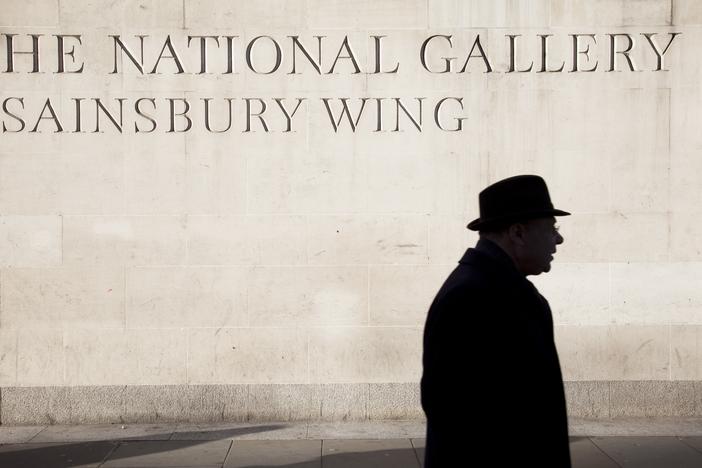Section Branding
Header Content
So your property has been 'Banksy-ed.' Now what?
Primary Content
BRISTOL, ENGLAND - What do you do if you find Banksy has paid a visit to your property?
It's a question Dennis Stinchcombe found himself asking about 10 years ago after a strange piece of art had appeared overnight on a wall outside of Broad Plain, a youth center he runs on the outskirts of Bristol.
"[My son] called me up and said, 'Dad, you're not going to believe this, but I think there's a Banksy on the wall,'" the 68-year-old Stinchcombe remembers.
The piece was called Mobile Lovers.
It showed a couple in an embrace looking over each other's shoulders — their eyes gazed not at each other but at their respective smartphones.
Within 24 hours, Banksy, a Bristol native who attended Broad Plain as a kid, claimed responsibility for the piece on his website.
But it wasn't until hundreds of people started showing up in front of the mural daily that Stinchcombe realized how valuable this piece was and the intense and costly responsibility he now had to protect it.
"We had threats from different idiots that came around in vans saying that they're going to damage it," says Stinchcombe, who had a team of parents help him move the piece indoors to protect it — and for good reason.
The piece was eventually sold to a private collector for £563,000 (around $700,000), with the proceeds given back to the center.
But the sale was only made possible thanks to a rare letter of authentication Banksy agreed to draw up for Stinchcombe.
"Without authenticity, no one's buying it," says Steven Lazarides, a London-based artist who started in the art world as Banksy's official photographer in the late 1990s.
Lazarides says that without an official authentication from Banksy himself, most art galleries and collectors wouldn't think of touching a Banksy.
There's a practical side to this — authentications protect Banksy from forgeries (which are still common) and the law (admitting to committing criminal damage has its own implications.)
But Lazarides says there's a larger philosophical reason why Banksy has generally shied away from authenticating his street art and why selling these pieces is largely frowned upon.
"It becomes a case of someone's trying to sell [a Banksy] as an artwork when it was never meant as an artwork," he says.
"It's a piece of graffiti. There's a difference between what [artists] do on the street and what they do in the studio."
But this ethos hasn't been enough to stop people from thinking about turning a profit.
Julian Usher runs the Red Eight Art Gallery in East London.
On Valentine's Day 2023, he got a call from a couple in the British seaside town of Margate.
"It's a lady on the phone who said, 'I think I've got a Banksy on my wall,'" Usher recalls.
This piece was called Valentine's Mascara. It depicted a 1950s housewife with a black eye shutting her husband into a refrigerator. It appears to highlight domestic violence.
Usher quickly sent a team of excavators to help dismantle the piece from the property and sent it to London.
It's currently on display at the Yamaha store in Soho while Usher tries to find a buyer — something that will take time without a certificate of authentication from Banksy.
"What's important from my perspective is to keep the artwork alive," says Usher. "Yes, we can earn some money out of it, but that's not the overall goal."
Usher believes that once sold, the piece could make up to £3 million ($3.7 million.) Most of the proceeds will go back to the owner, with a cut taken from Usher's gallery.
Usher also says a six-figure sum will be donated to a local charity that helps domestic violence victims.
When asked how he feels about the fact that what he's doing remains controversial in the art world — that is, taking street art off the street and making money off of it — he pushes back.
From Usher's standpoint, he's just trying to help the property owners who get caught up in all this mess.
For him, there's not enough scrutiny against Banksy for defacing people's property.
"Unfortunately, with the street works, [Banksy] doesn't ask permission," Usher says. "He's really the richest vandal that is on the planet. He dumps this onto someone's house or property."
Because of his secrecy, we don't know how much Banksy is worth, though some of his works have sold at auction for millions.
Usher says Banksy's unwillingness to draw up certificates of authentication is what's responsible for creating this gray market.
Dennis Stinchcombe says that even with the headaches, the Banksy saga is one of the greatest things that ever happened to Broad Plain Youth Center. Before Banksy's mural showed up on his wall, the center was on the brink of bankruptcy.
"If it wasn't for Banksy, we would have closed 10 years ago," Stinchcombe says.
With the center now facing financial difficulties again, Stinchcombe says he's ready to go through this adventure again if Banksy wants to consider putting a second mural on his wall.
When asked why he thinks Banksy chose Broad Plain for Mobile Lovers, Stinchcombe speculates it has something to do with what Banksy learned while attending the center as a kid.
"There's such a thing as values, and life is actually what you make it," Stinchcombe says. "We teach kids if you want something, you got to go out and get it — and if you don't put it in, you can't take it out."
Bottom Content




